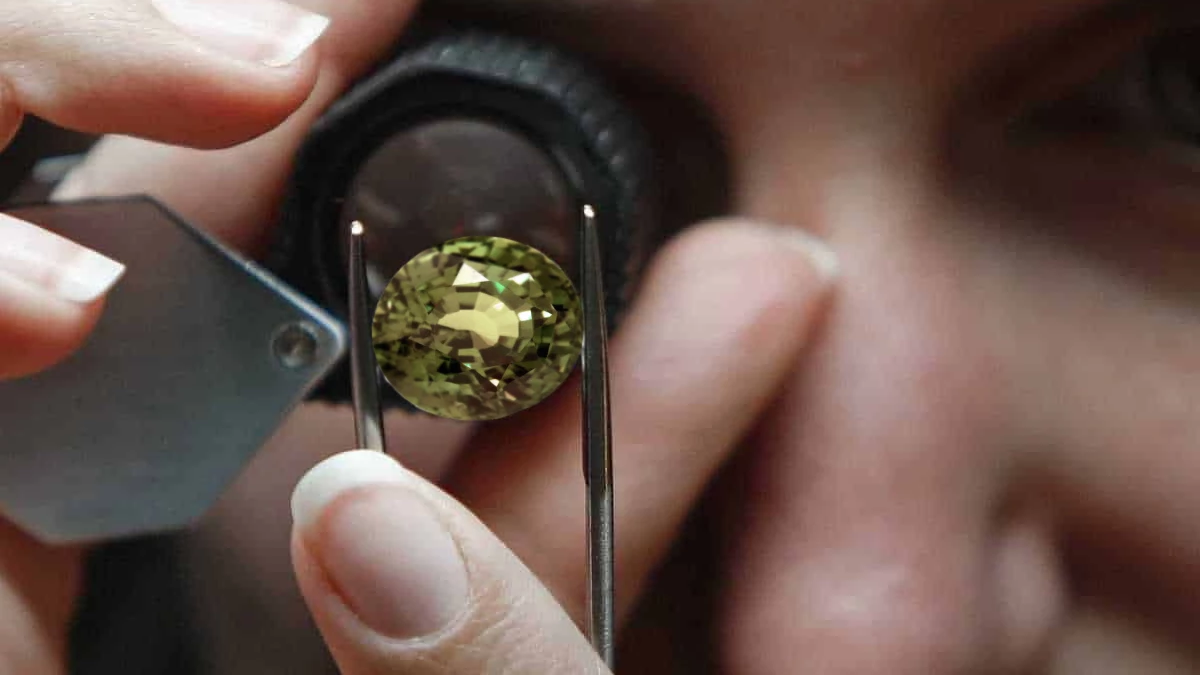One of the rarest and most precious of natural gemstones is the alexandrite gemstone. It is truly a gem you could ever acquire in your life. This June gemstone is widely known for its magnificent color-changing characteristics. Consequently, it appears bluish green or completely green like an emerald stone in the daylight, but transforms to red under night-lights.
Discovering The Source Of Alexandrite’s Divine Hues
Are you wondering why this June gemstone emits two different hues in different sources of light? Well, that’s all because of the 580NM of the light absorption band. It makes it possible for the spectators to observe a significant color change from red to green or vice versa. This very property makes alexandrite the first choice of gem lovers across the world. But in reality, only a few get this rare opportunity to possess a real alexandrite stone.

Estimating The Worth Of June Gemstone
The value of alexandrite depends on the depth of its colors, that is, being pure red or pure green under different lighting conditions. Also, the degree of color change, which may range from 5% to 100%, affects this June birthstone’s market price.
The higher the visibility of the aforementioned traits in any alexandrite, the greater the value of the stone. So, even if an opaque stone exhibits 100% color change, it would still be more valuable than a transparent one. The clarity of the stone holds somewhat less significance here.
Diving Into The Rich History Of Alexandrite Gemstones:
Alexandrite was discovered in the 1830s in the Ural Mountains’ emerald mines near the Tokovaya River in Imperial Russia. According to various sources, these alexandrite gems were of the finest quality, exhibiting prominent color-changing features.
Nils Gustaf Nordenskiold, a mineralogist from Finland, first recognized the worth and remarkable features of this June gemstone. He initially took the gem for an emerald. However, soon he realized that the newly discovered stone shifts color under different lighting conditions which is unlike an emerald.
Reviving The Glory Of Alexandrite Gemstone Jewelry In Ancient Cultures
Are you wondering how alexandrite got its unique name? Well, the credit goes to the Russian mineralogist Count Lev Alekseevich Perovskii. He, in 1834, bestowed the name to the newly discovered gem in honor of the future Tsar Alexander II. And guess what the occasion was? Well, it was the 16th birthday of the then-next heir of the Russian royal throne.
But there’s more as to why the stone became so popular in Imperial Russia. Well, this June gemstone displays both green and red shades, representing the imperial colors of the national military. Consequently, alexandrites soon received the status of the official gemstones of Imperial Russia.
Additionally, Czars (the Russian Emperors until 1917) during the 19th and early 20th centuries, further popularized color-shifting alexandrites among royalty.
During this time only, the American gemologist George Frederick Kunz also designed several alexandrite rings for his jewelry collection. The royals in Victorian England also styled jewelry embellished with this precious gemstone. And finally, in 1952, alexandrite became the modern June gemstone.
Mineral Composition And Mining Reserves
Alexandrite is a combination of two different minerals, Beryllium and Chromium, the former being the rarest mineral found on Earth. So, once the Russian reserves depleted after a few decades of mining, the stone became rarer. It was only after the discovery of new reserves in Brazil in 1987 that this June gemstone gained prominence.
Today, we get alexandrites from mines in East Africa, Sri Lanka, Madagascar, Myanmar and Zimbabwe. However, the occurrence of fine-quality minerals is still rare. Most stones exhibit dull hues and possess weak color-changing properties as compared to the gems from the original Russian reserves.

Lab-grown Alexandrites
The extreme rarity of fine alexandrites has made them even rarer than natural diamonds. Even the stones of comparatively low quality are almost unaffordable to most. Due to this reason, scientists invented synthetic alexandrite in the 1960s.
Today, real alexandrites are manufactured in labs using hydrothermal, melt or flux techniques. These man-made counterparts of the natural ones cost quite less than the latter, making them an affordable choice for all.
Parting Thoughts
If you are a June-born, grab your chance to transform and balance your life with the spiritual energy of alexandrite. Shower your beloved in good luck with this camouflaging June gemstone.
Order a sparkling alexandrite today at GemsNY to create fine jewelry. Or try our make-your-own jewelry feature to craft alexandrite rings, necklaces, earrings and bracelets. Once you do that, don’t forget to share your buying experience on GemsNY reviews.











